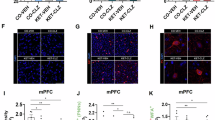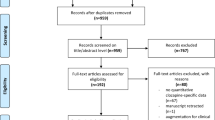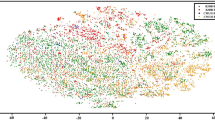Abstract
This study evaluated the disposition of the two atypical antipsychotics, amisulpride (AMS) and clozapine (CLZ), and its main metabolite N-desmethylclozapine (DCLZ), to their target structures in the central nervous system by applying an in vitro blood–brain barrier and blood–cerebrospinal fluid (CSF) barrier based on monolayers of porcine brain microvessel endothelial cells (PMEC) or porcine choroid plexus epithelial cells (PCEC). Permeation studies through PMEC- and PCEC-monolayers were conducted for 60 min at drug concentrations of 1, 5, 10, and 30 μM applied to the donor compartment. PMEC were almost impermeable for AMS (permeation coefficient, P<1 × 10−7 cm/s) in the resorptive direction, whereas transport in the secretory direction was observed with a P (±SD) of 5.2±3.6 × 10−6 cm/s. The resorptive P of CLZ and DCLZ were 2.3±1.2 × 10−4 and 9.6±5.0 × 10−5 cm/s, respectively. For the permeation across PCEC in the resorptive direction, a P of 1.7±2.5 × 10−6 cm/s was found for AMS and a P of 1.6±0.9 × 10−4 and 2.3±1.3 × 10−5 cm/s was calculated for CLZ and DCLZ, respectively. Both, CLZ and DCLZ, could easily pass both barriers with about a five-fold higher permeation rate of CLZ at the PCEC. The permeation of AMS across the BBB was restricted partly due to an efflux transport. It is thus suggested that AMS reaches its target structures via transport across the blood–CSF barrier.
Similar content being viewed by others
Log in or create a free account to read this content
Gain free access to this article, as well as selected content from this journal and more on nature.com
or
References
Angeletti RH, Novikoff PM, Juvvadi SR, Fritschy J-M, Meier PJ, Wolkoff AW (1997). The choroid plexus epithelium is the site of the organic anion transport protein in the brain. Proc Natl Acad Sci USA 94: 283–286.
Avdeef A, Box KJ, Comer JEA, Gilges M, Hadley M, Hibbert C et al (1999). PH-metric LogP11. pKa determination of water-insoluble drugs in organic solvent-water mixtures. J Pharm Biomed Anal 20: 631–641.
Baluom M, Friedmann M, Rubinstein A (2001). Improved intestinal absorption of sulpiride in rats with synchronized oral delivery systems. J Control Release 70: 139–147.
Castelli MP, Mocci I, Sanna AM, Gessa GL, Pani L (2001). (-) S amisulpride binds with high affinity to cloned dopamine D3 and D2 receptors. Eur J Pharmacol 432: 143–147.
Coukell AJ, Spencer CM, Benfield P (1996). Amisulpride. A review of its pharmacodynamic and pharmacokinetic properties and therapeutic efficacy in the management of schizophrenia. CNS Drugs 6: 237–256.
Crook RB, Kasagami H, Prusiner SB (1981). Culture and characterization of epithelial cells from bovine choroid plexus. J Neurochem 37: 845–854.
Cudennec A, Fage D, Bénavidès J, Scatton B (1997). Effects of amisulpride, an atypical antipsychotic which blocks preferentially presynaptic dopamine autoreceptors, on integrated functional cerebral activity in the rat. Brain Res 768: 257–265.
Doan KMM, Humphreys JE, Webster LO, Wring SA, Shampine LJ, Serabjit-Singh CJ et al (2002). Passive permeability and P-glycoprotein-mediated efflux differentiate central nervous system (CNS) and non-CNS marketed drugs. J Pharmacol Exp Ther 303: 1029–1037.
Dufour A, Desanti C (1988). Pharmacocinétique et métabolisme de l’amisulpride. Ann Psychiatry 3: 298–305.
Eisenblätter T, Galla H-J (2002). A new multidrug resistance protein at the blood–brain barrier. Biochem Biophys Res Commun 293: 1273–1278.
Eisenblätter T, Hüwel S, Galla H-J (2003). Characterisation of the brain multidrug resistance protein (BMDP/ABCG2/BCRP) expressed at the blood–brain barrier. Brain Res 971: 221–231.
Franke H, Galla H-J, Beuckmann CT (1999). An improved low-permeability in vitro-model of the blood–brain barrier: transport studies on retinoids, sucrose, haloperidol, caffeine and mannitol. Brain Res 818: 65–71.
Franke H, Galla H-J, Beuckmann CT (2000). Primary cultures of brain microvessel endothelial cells: a valid and flexible model to study drug transport through the blood–brain barrier in vitro. Brain Res Protoc 5: 248–256.
Gao B, Meier PJ (2001). Organic anion transport across the choroid plexus. Microsc Res Techniq 52: 60–64.
Gath U, Hakvoort A, Wegener J, Decker S, Galla H-J (1997). Porcine choroid plexus cells in culture: maintenance of barrier properties and apical secretion of CSF components. Eur J Cell Biol 74: 68–78.
Ghersi-Egea J-F, Strazielle N (2001). Brain drug delivery, drug metabolism, and multidrug resistance at the choroid plexus. Microsc Res Techniq 52: 83–88.
Grunder G, Wetzel H, Schlosser R, Anghelescu I, Hillert A, Lange K et al (1999). Neuroendocrine response to antipsychotics: effects of drug type and gender. Biol Psychiatry 45: 89–97.
Gutmann H, Toeroek M, Fricker G, Huwyler J, Beglinger C, Drewe J (1999). Modulation of multidrug resistance protein expression in porcine brain capillary endothelial cells in vitro. Drug Metab Dispos 27: 937–941.
Hakvoort A, Haselbach M, Galla H-J (1998). Active transport properties of porcine choroid plexus cells in culture. Brain Res 795: 247–256.
Haselbach M, Wegener J, Decker S, Engelbertz C, Galla H-J (2001). Porcine choroid plexus epithelial cells in culture: regulation of barrier properties and transport processes. Microsc Res Techniq 52: 137–152.
Henthorn TK, Liu Y, Mahapatro M, Ng K (1999). Active transport of fentanyl by the blood–brain barrier. J Pharmacol Exp Ther 289: 1084–1089.
Hoheisel D, Nitz T, Franke H, Wegener J, Hakwoort A, Tilling T et al (1998). Hydrocortisone reinforces the blood–brain barrier properties in a serum free cell culture system. Biochem Biophys Res Commun 244: 312–316.
King M, Su W, Chang A, Zuckerman A, Pasternak GW (2001). Transport of opioids from the brain to the periphery by P-glycoprotein: peripheral actions of central drugs. Nat Neurosci 4: 268–274.
Leo AJ (1987). Some advantages of calculating octanol-water partition coefficients. J Pharm Sci 76: 166–168.
Martinot JL, Pailére-Martinot M-L, Poirier ME, Dao-Castellana MH, Loc’h C, Maziére B (1996). In vivo characteristics of dopamine D2 receptor occupancy by amisulpride in schizophrenia. Psychopharmacology 124: 154–158.
Miller DS, Nobmann SN, Gutmann H, Toeroek M, Drewe J, Fricker G (2000). Xenobiotic transport across isolated brain microvessels studied by comfocal microscopy. Mol Pharmacol 58: 1357–1367.
Möller H-J (2001). Amisulpride: efficacy in the management of chronic patients with predominant negative symptoms of schizophrenia. Eur Arch Psychiatry Clin Neurosci 251: 217–224.
Müller MJ, Härtter S, Köhler D, Hiemke C (2001). Serum levels of sulpiride enantiomers after oral treatment with racemic sulpiride in psychiatric patients: a pilot study. Pharmacopsychiatry 34: 27–32.
Nordstrom AL, Farde L, Nyberg S, Karlsson P, Halldin C, Sedvall G (1995). D1, D2, and 5-HT2 receptor occupancy in relation to clozapine serum concentration: a PET study of schizophrenic patients. Am J Psychiatry 152: 1444–1449.
Pani L, Gessa GL (2002). The substituted benzamide and their clinical potential on dysthymia and on the negative symptoms of schizophrenia. Mol Psychiatry 7: 247–253.
Pardridge WM, Triguero D, Yang J, Cancilla PA (1990). Comparison of in vitro and in vivo models of drug transcytosis through the blood–brain barrier. J Pharmacol Exp Ther 253: 884–891.
Perrault GH, Depoortere R, Morel E, Sanger DJ, Scatton B (1997). Psychopharmacological profile of amisulpride: an antipsychotic with presynaptic D2/D3 dopamine receptor antagonist activity and limbic selectivity. J Pharmacol Exp Ther 280: 73–82.
Polli JW, Wring SA, Humphreys JE, Huang L, Morgan JB, Webster LO et al (2001). Rational use of in vitro P-glycoprotein assays in drug discovery. J Pharmacol Exp Ther 299: 620–628.
Rao VV, Dahlheimer JL, Bardgeti ME, Snyder AZ, Finch RA, Sartorellei AC et al (1999). Choroid plexus epithelial expression of MDR1 P glycoprotein and multidrug resistance-associated protein contribute to the blood–cerebrospinal-fluid drug-permeability barrier. Proc Natl Acad Sci USA 96: 3900–3905.
Scatton B, Claustre Y, Cudennec A, Oblin A, Perrault GH, Sanger DJ et al (1997). Amisulpride: from animal pharmacology to therapeutic action. Int Clin Psychopharmacol 12(Suppl 2): S29–S36.
Schoemaker H, Claustre Y, Fage D, Rouquier L, Chergui K, Curet O et al (1997). Neurochemical characteristics of amisulpride, and atypical dopamine D2/D3 receptor antagonist with both presynaptic and limbic selectivity. J Pharmacol Exp Ther 280: 83–97.
Takacs-Novak K, Avdeef A (1996). Interlaboratory study of LogP determination by shake-flask and potentiometric methods. J Pharm Biomed Anal 14: 1405–1413.
Umbreit-Luik M, Dross K (1983). Regional distribution of three related benzamides (sulpiride, sultopride and DAN 2163) in the brain of the rat. Arch Pharmacol 324(Suppl): R68.
Weigmann H, Härtter S, Fischer V, Dahmen N, Hiemke C (1999). Distribution of clozapine and desmethylclozapine between blood and brain in rats. Eur Neuropsychopharmacol 9: 253–256.
Wilk S, Stanley M (1978). Clozapine concentrations in brain regions: relationship to dopamine metabolite increase. Eur J Pharmacol 15: 101–107.
Xiberas X, Martinot JL, Mallet L, Artiges E, Canal M, Loc’h C et al (2001). In vivo extrastriatal and striatal D2 dopamine receptor blockade by amisulpride in schizophrenia. J Clin Psychopharmacol 21: 207–214.
Acknowledgements
This study was supported by a grant from the Deutsche Forschungsgemeinschaft (Hi 399/5-1). The generous financial aid provided by Dr Eich and Sanofi-Synthelabo (Berlin, Germany) is gratefully acknowledged.
Author information
Authors and Affiliations
Corresponding author
Rights and permissions
About this article
Cite this article
Härtter, S., Hüwel, S., Lohmann, T. et al. How Does the Benzamide Antipsychotic Amisulpride get into the Brain?—An In Vitro Approach Comparing Amisulpride with Clozapine. Neuropsychopharmacol 28, 1916–1922 (2003). https://doi.org/10.1038/sj.npp.1300244
Received:
Revised:
Accepted:
Published:
Issue date:
DOI: https://doi.org/10.1038/sj.npp.1300244
Keywords
This article is cited by
-
Region-specific blood–brain barrier transporter changes leads to increased sensitivity to amisulpride in Alzheimer’s disease
Fluids and Barriers of the CNS (2019)
-
A systematic microdialysis study of dopamine transmission in the accumbens shell/core and prefrontal cortex after acute antipsychotics
Psychopharmacology (2015)
-
Effects of (−)-OSU6162 and ACR16 on motor activity in rats, indicating a unique mechanism of dopaminergic stabilization
Journal of Neural Transmission (2008)
-
Cyclosporine A (CsA) affects the pharmacodynamics and pharmacokinetics of the atypical antipsychotic amisulpride probably via inhibition of P-glycoprotein (P-gp)
Journal of Neural Transmission (2006)
-
Effects of novel antipsychotics, amisulpiride and aripiprazole, on maternal behavior in rats
Psychopharmacology (2005)



